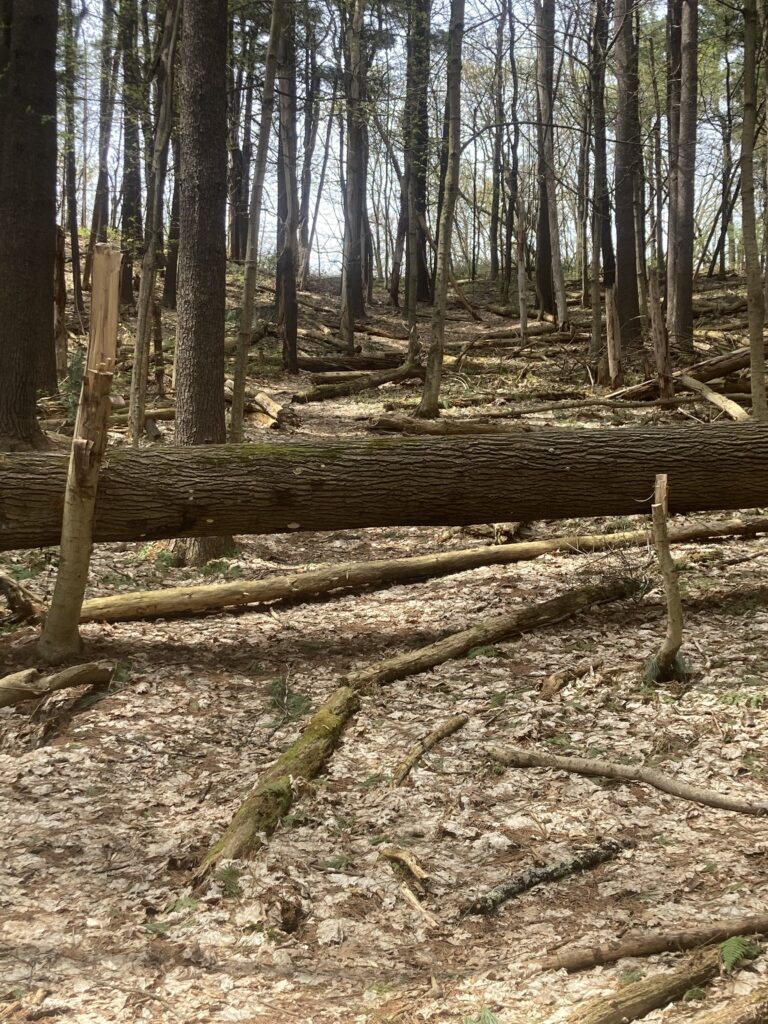Since the last time I visited, the snow has melted, and now signs of spring are abundant throughout the woods. Ostrich, and other varieties of ferns have started to unfurl, along with some leafy ground plants, and many trees have started to bud out. As sun is filtering through the canopy, there are intermittent bright spots of wildflowers popping up.
Aside from these visual changes, the forest is also much more vibrant with sound that it had been throughout the winter. Although I cannot recognize bird calls, there was a constant cacophony of several different species of birds calling in unison. In the underbrush, there was plenty rustling from squirrels digging around in the leaves from last fall.
In this location, nature and culture intertwine quite readily. It is a space that is home to many species of plants and animals, but throughout the past couple centuries, it has also gone through many phases of being due to human involvement. In its current phase though, there are several paths through the woods that allow for humans and this natural space to meet, without major harm coming to either. Unlike many other connections between nature and culture in urban settings, Centennial Woods feels like a place where we are the visitors, instead of the other way around.
I don’t think I consider myself a part of this place, but I definitely do feel a connection to it. I haven’t played any part in taking care of the area, and I have no real long term connection to it, but over the several times I’ve visited it this school year, it has become a place that is peaceful and comfortable for me.
